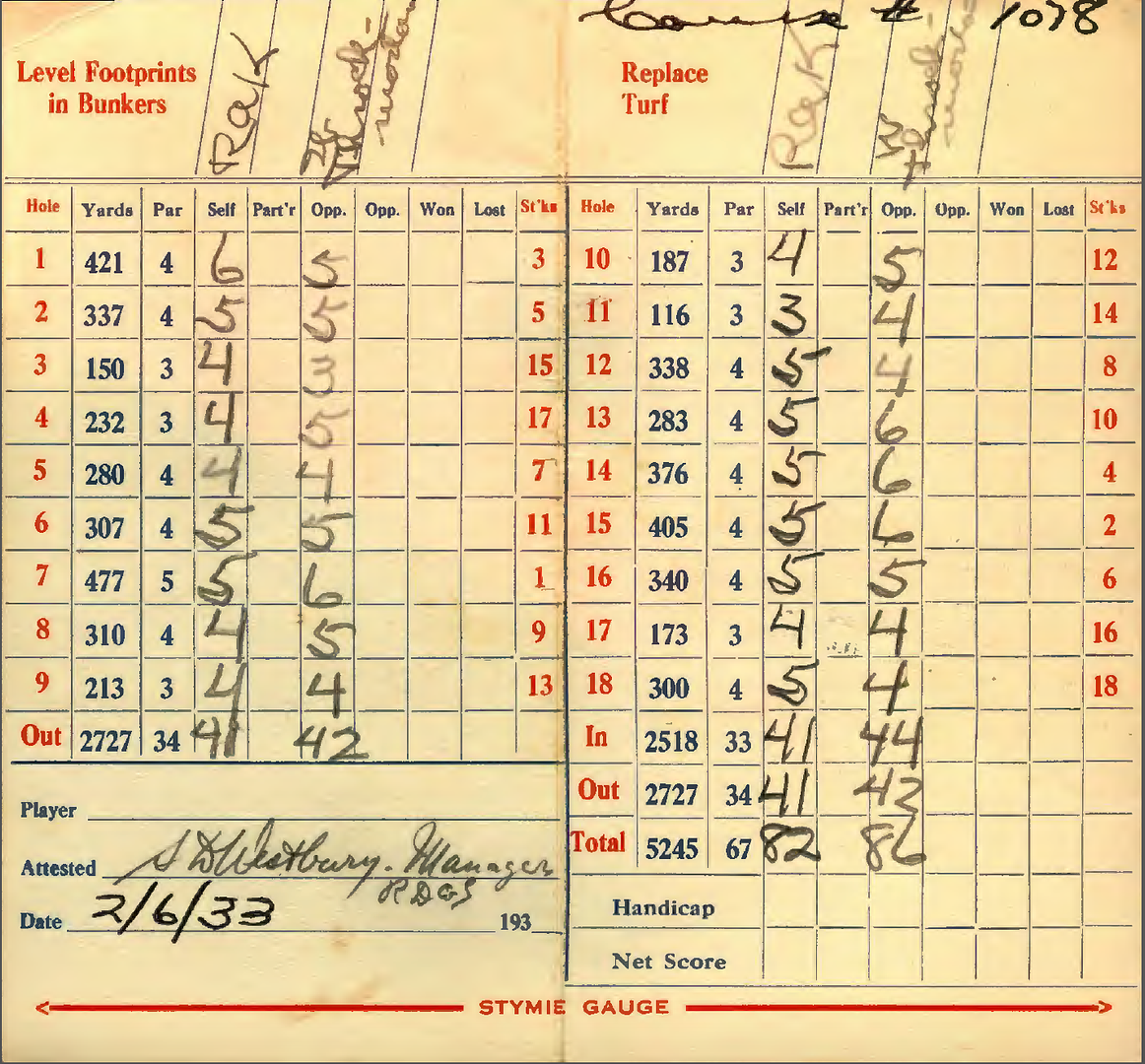1922Taft School Golf Course (Watertown, CT)
Oct. 3, 1922 Taft Papyrus -
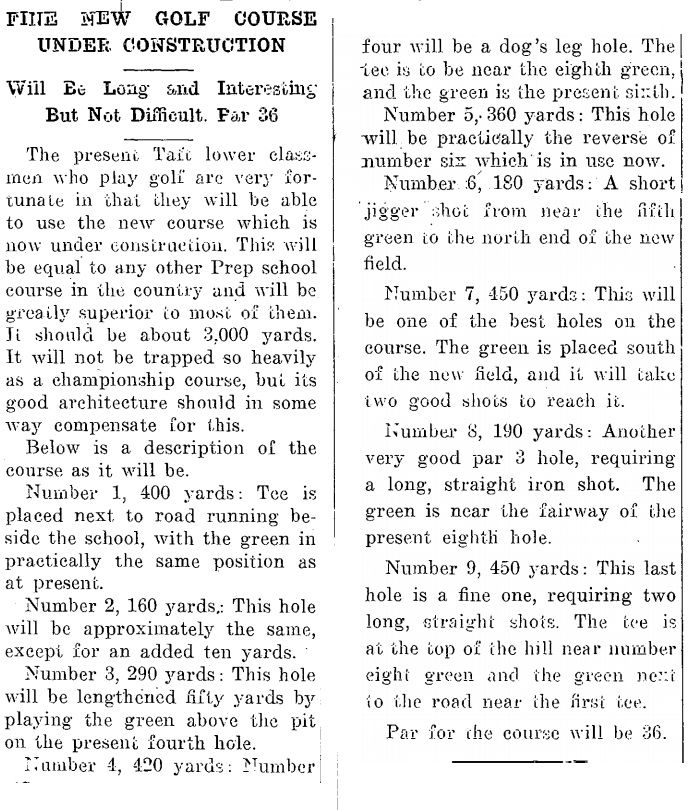
Oct. 4, 1922 Taft Papyrus -
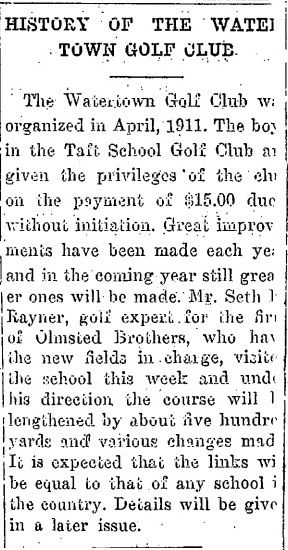
Oct. 13, 1922 Taft Papyrus -
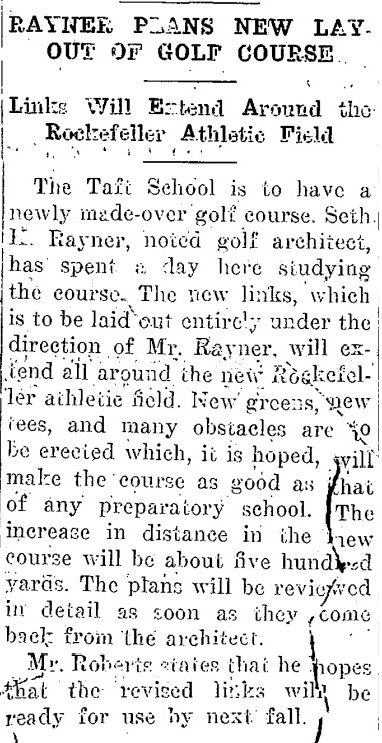
Jan. 17, 1923 Taft Papyrus -
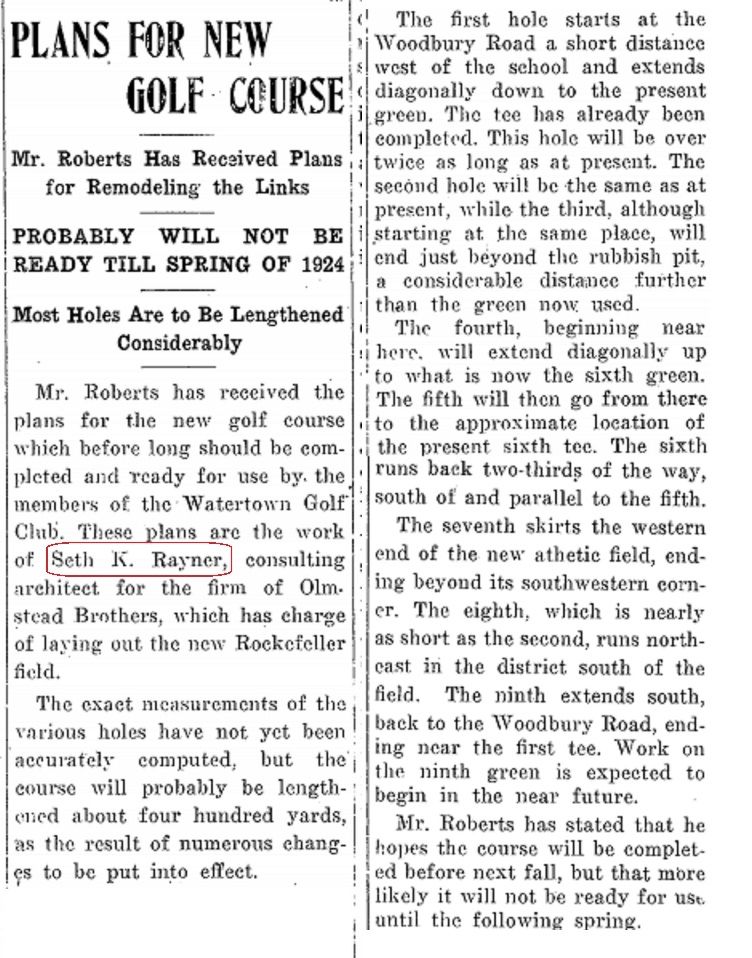
1922 Plan of the Course -
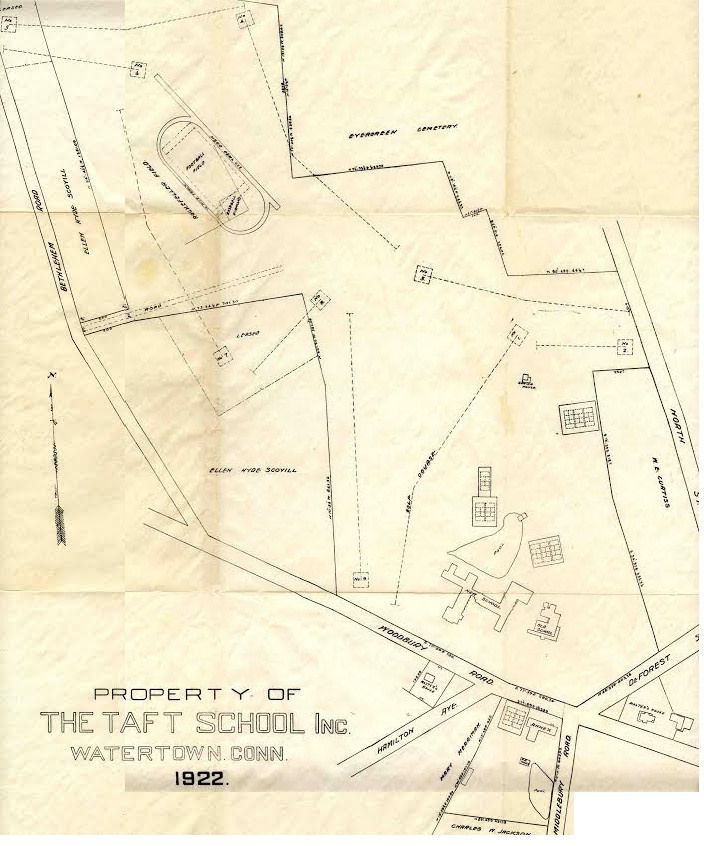
Aerial -
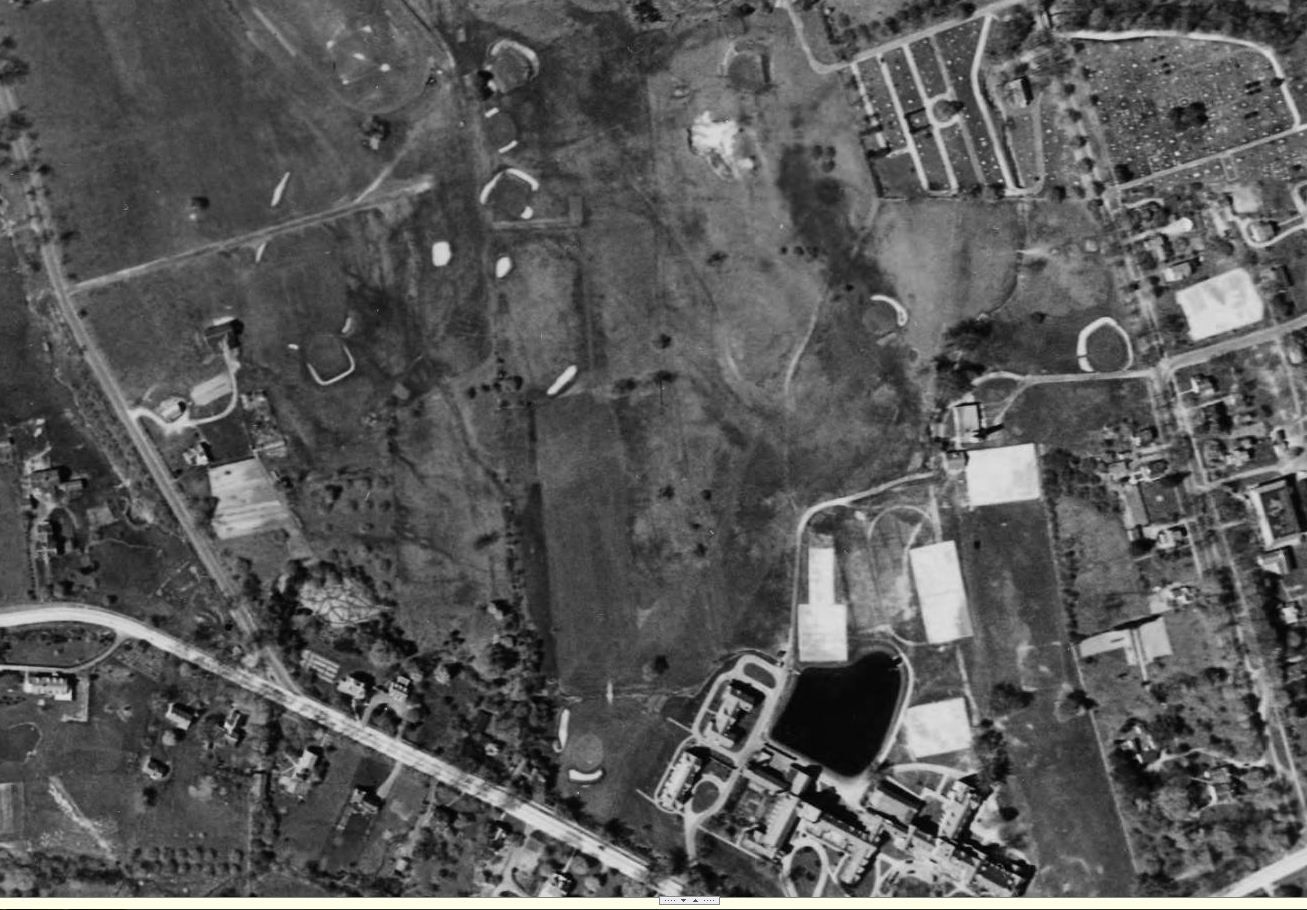 Blowing Rock Country Club o/k/a Green Park-Norwood Golf Course
Blowing Rock Country Club o/k/a Green Park-Norwood Golf Course (Blowing Rock, NC)
Raynor's involvement at Blowing Rock seemingly dates back to 1915, with a new 18 hole course put in place in 1923. In both instances, the actual construction of the course was managed by Lute Nelson.
Dec. 24, 1915 Lenoir News -

March 1, 1923 Statesville Record and Landmark -
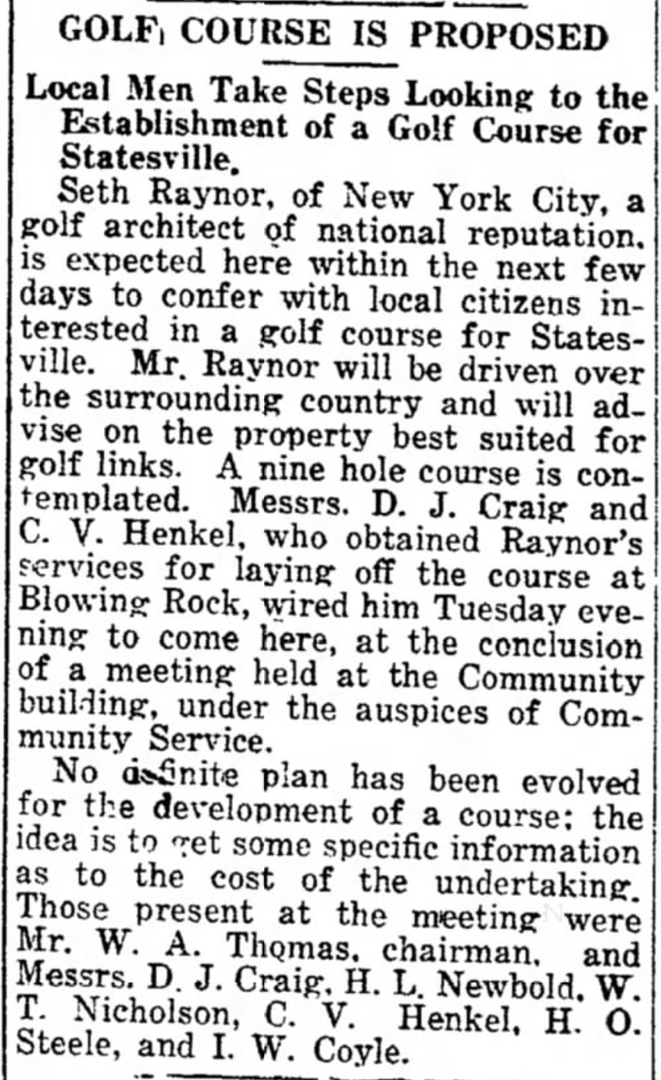
March 9, 1923 Lenoir News-Topic -
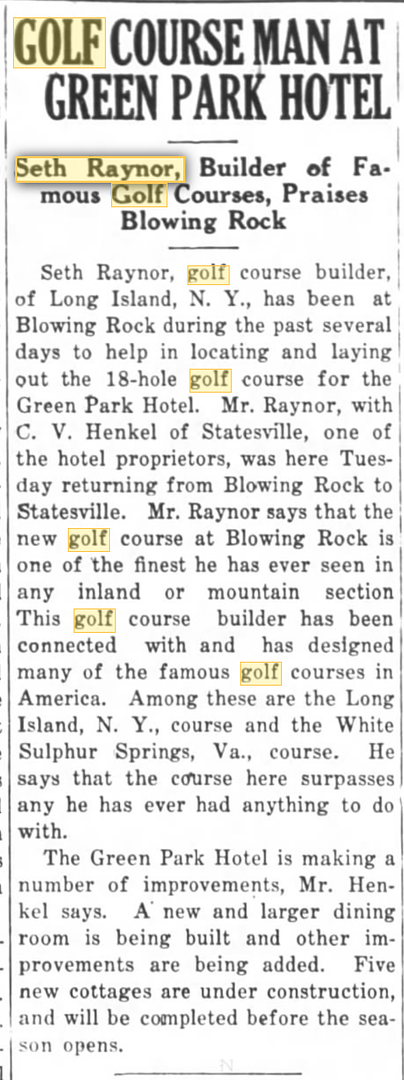
March 15, 1923 Watauga Democrat -
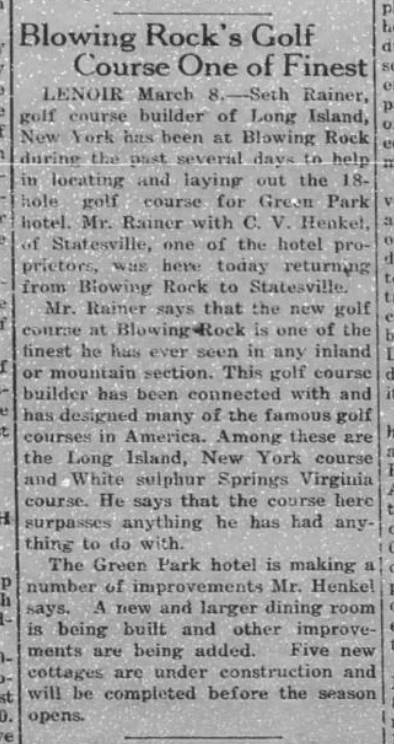
1942 Scorecard -
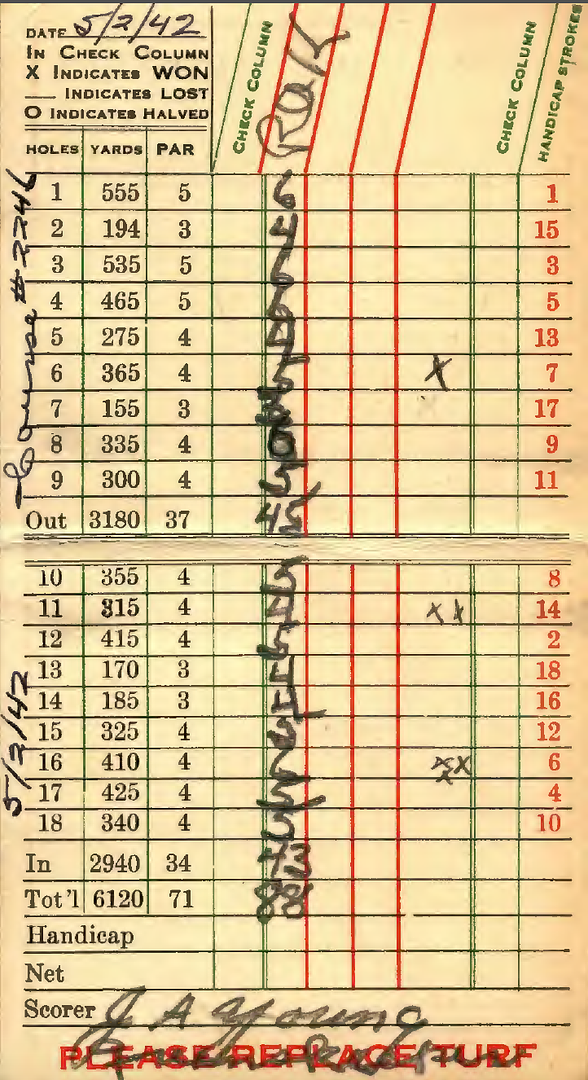 Brookville Country Club
Brookville Country Club (Glen Head, NY)
Jan. 18, 1922 Brooklyn Times Union -

Feb. 9, 1922 Brooklyn Times Union -
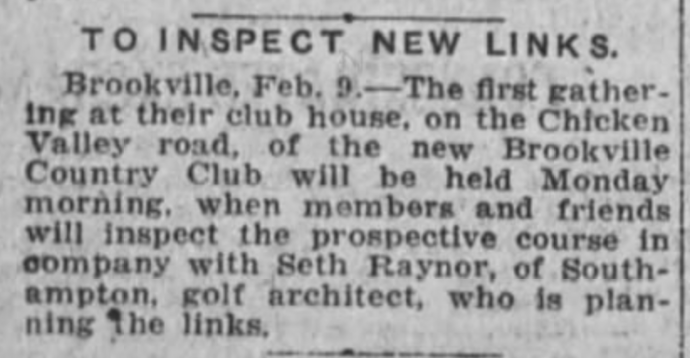
Feb. 17, 1922 Brooklyn Times Union -
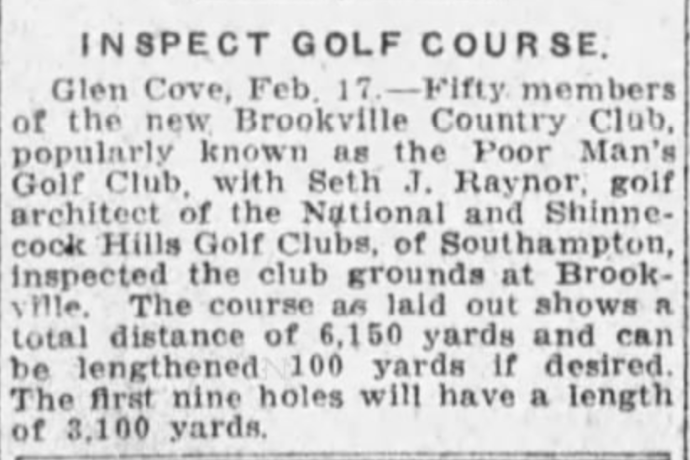
March 13, 1922 Brooklyn Times Union -
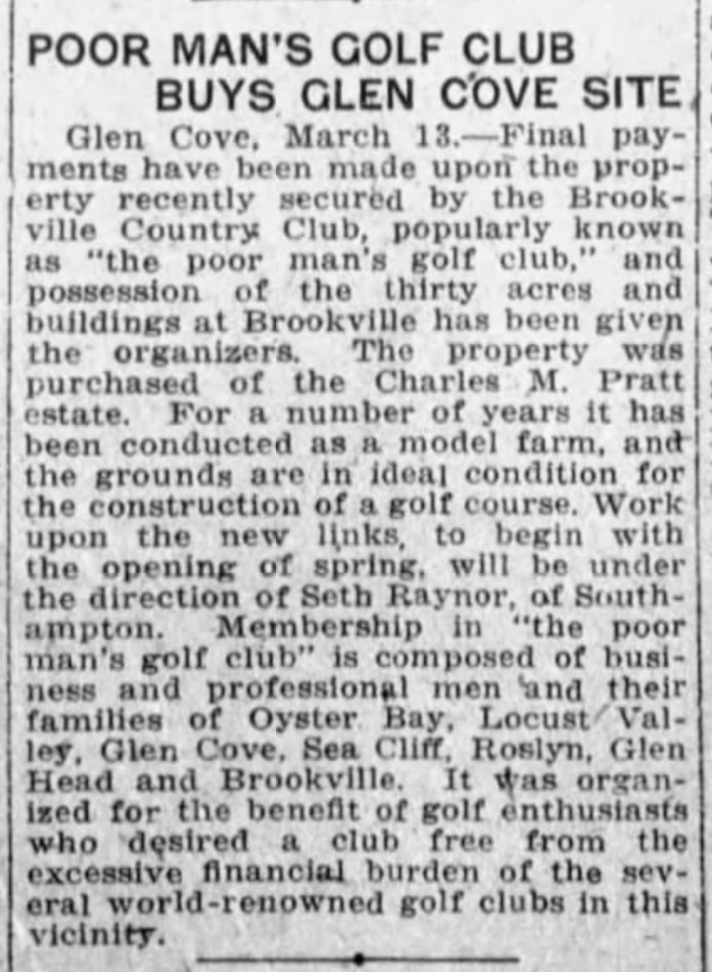
April 16, 1922 Brooklyn Daily Eagle -
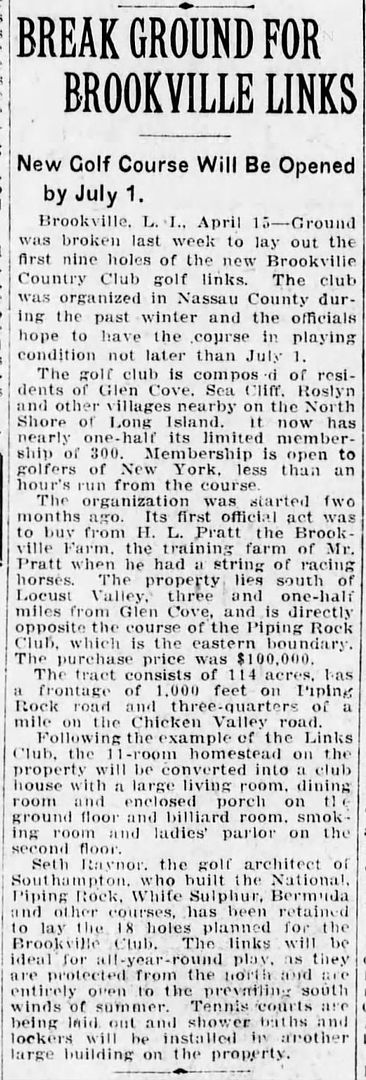
June 29, 1922 Brooklyn Times Union -
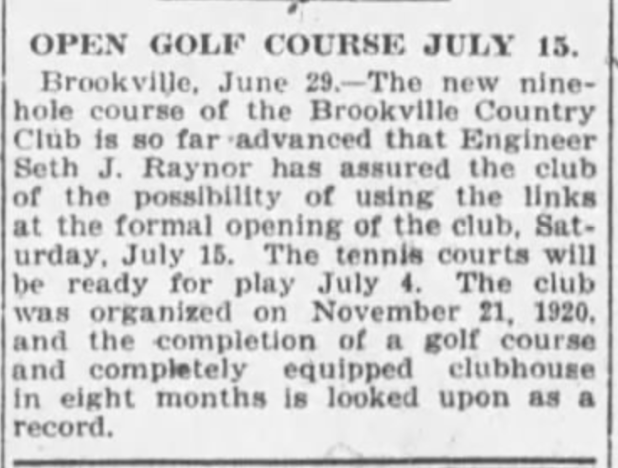 The Creek Club
The Creek Club (Locust Valley, NY)
July 25, 1922 Brooklyn Daily Eagle -
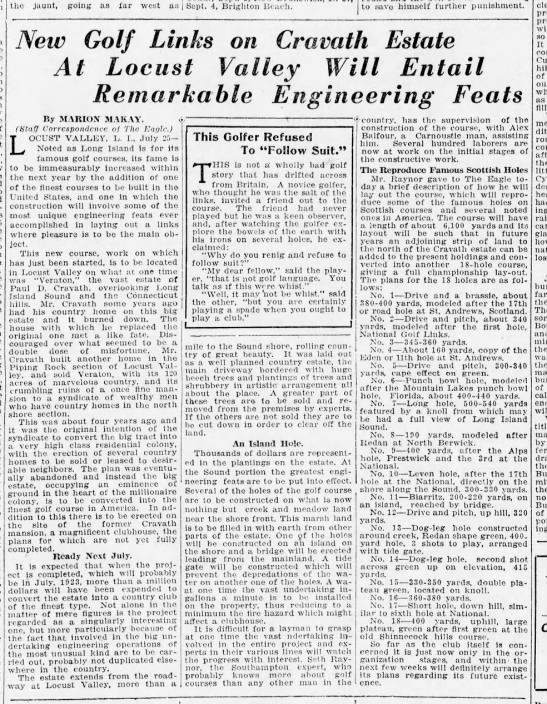
Aug. 13, 1922 New York Times -
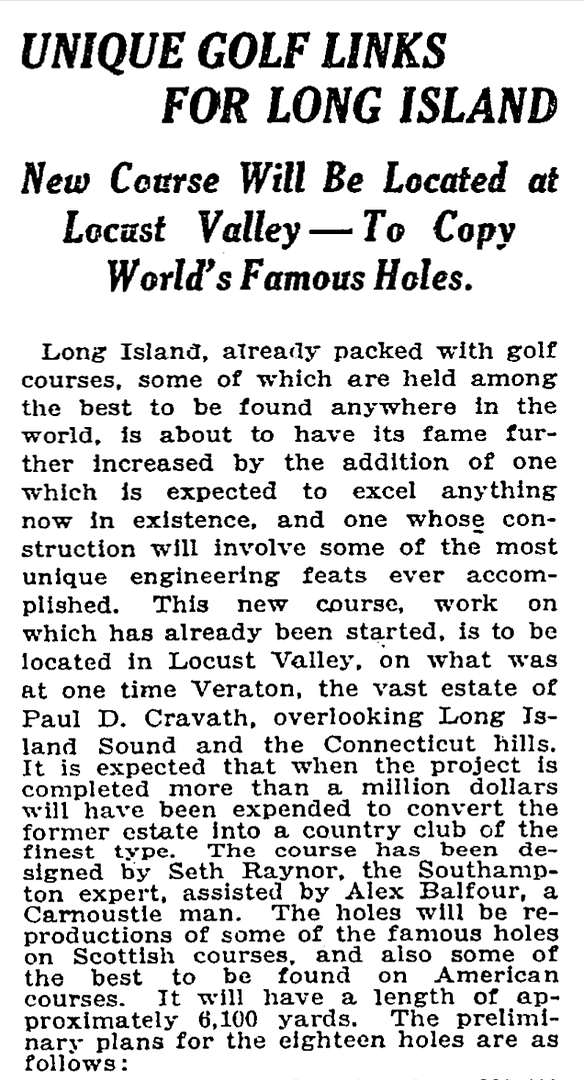
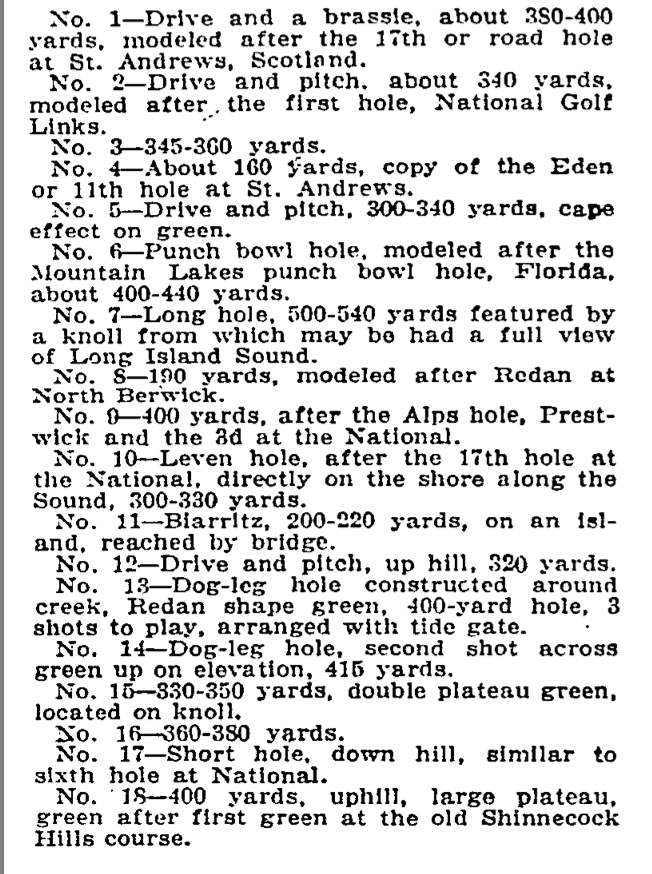
Dec. 22, 1922 Chicago Tribune -
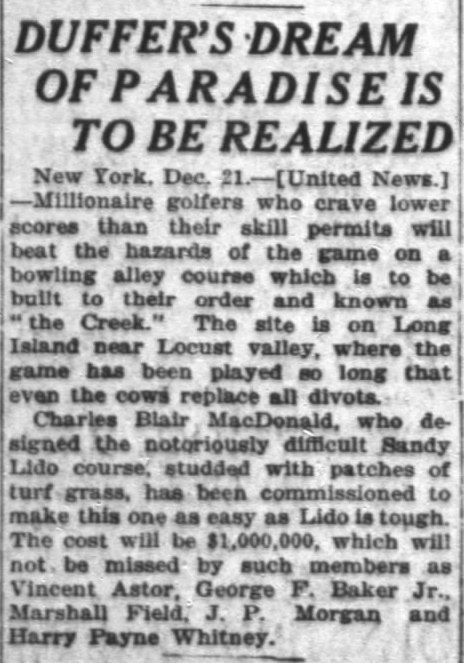
March 5, 1924 New York Evening Post -

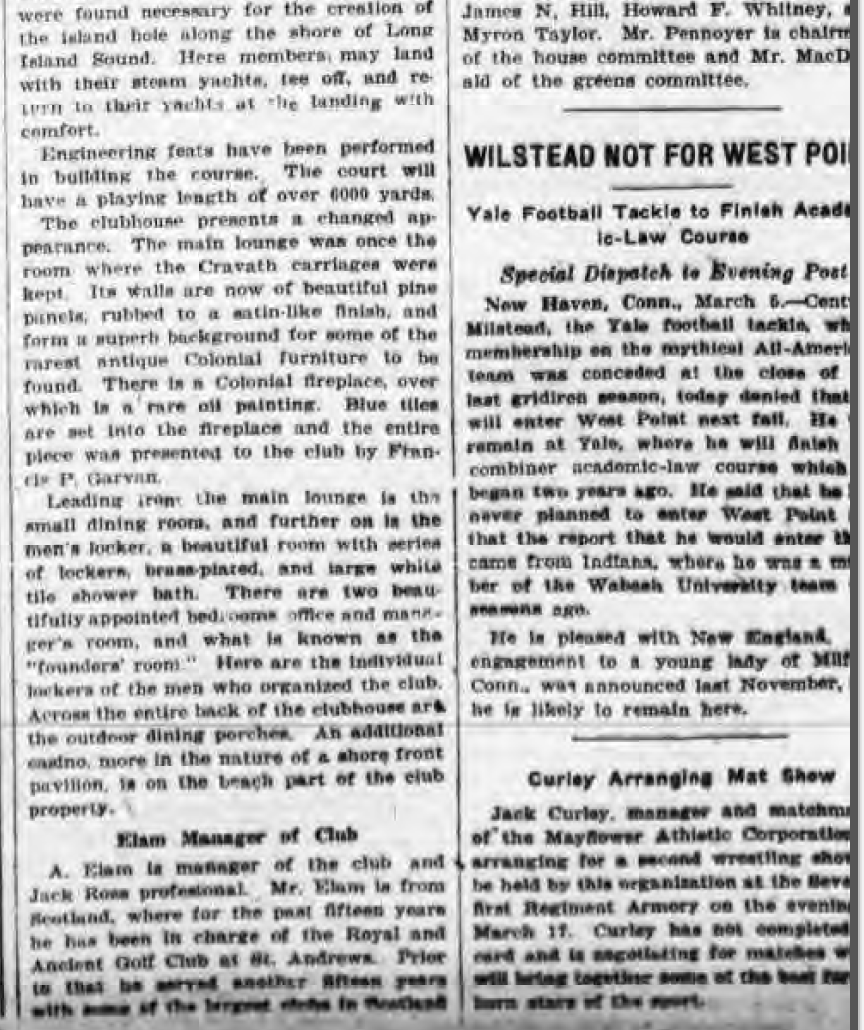
May 3, 1925 Brooklyn Daily Eagle -

May 17, 1925 Brooklyn Times Union -
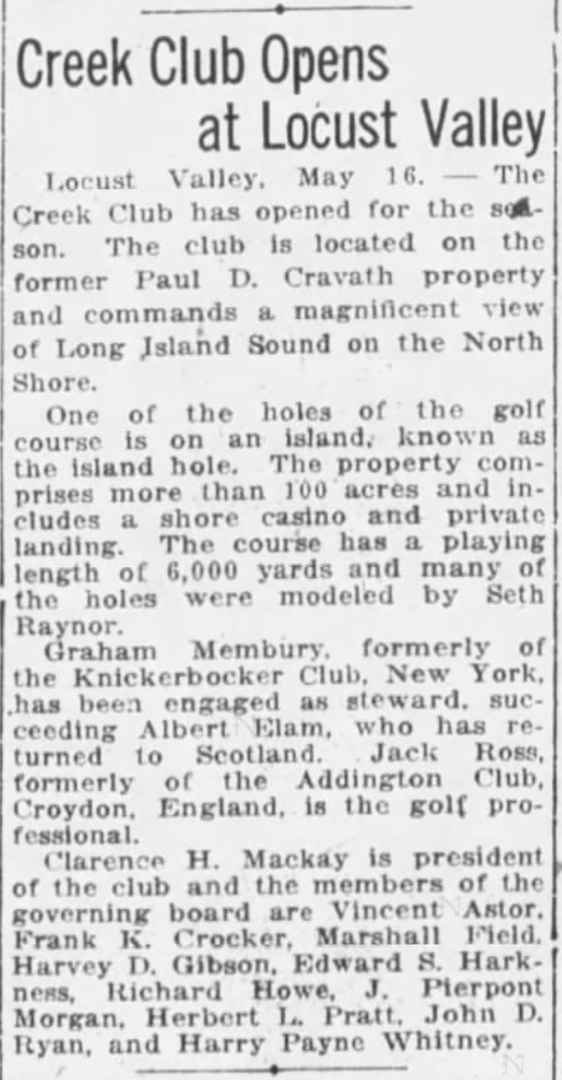 Glen Acres Country Club a/k/a Mossy Springs Country Club
Glen Acres Country Club a/k/a Mossy Springs Country Club (Harris Hill, NY)
Despite the reports below, the planned course never came to fruition.
March 19, 1922 Buffalo Courier -
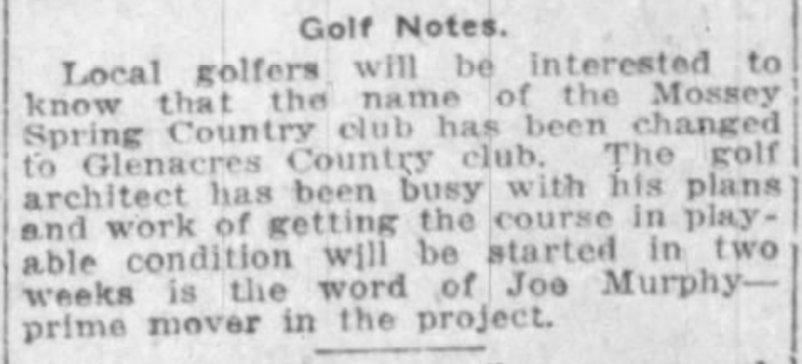
April 9, 1922 Buffalo Express -

April 15, 1922 Buffalo Times -

 Glen Head Country Club f/k/a Women's National Golf & Country Club
Glen Head Country Club f/k/a Women's National Golf & Country Club (Glen Head, NY)
Spearheaded by Marion Hollins, Women's National was a Devereux Emmet project with CBM and Raynor offering assistance. The Hollins/Raynor relationship would continue with her move to the West Coast in a few years.
Jan. 27, 1922 Daily News -

Feb. 1922 Golf Illustrated -
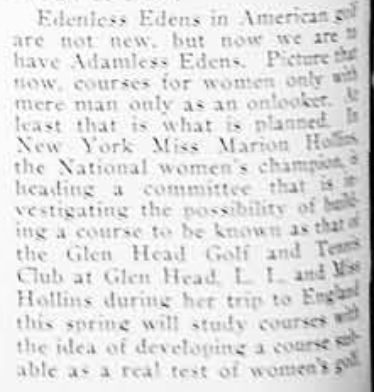
May 19, 1922 The Daily Times -

Oct. 20, 1922 New York Herald -

Nov. 22, 1922 Brooklyn Times Union -
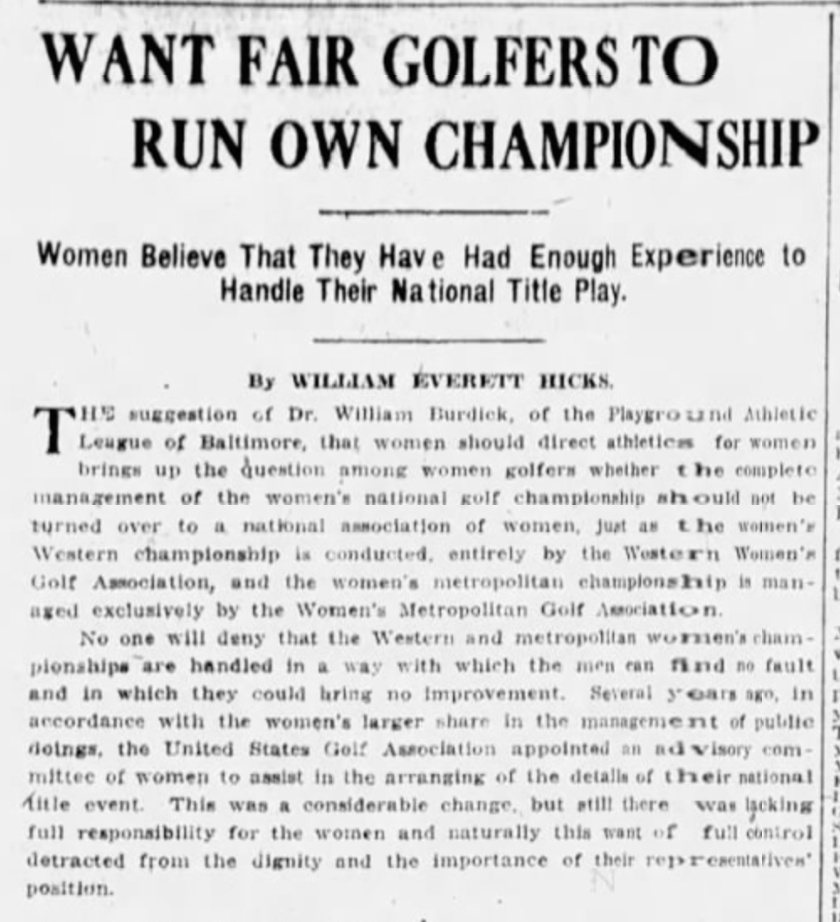

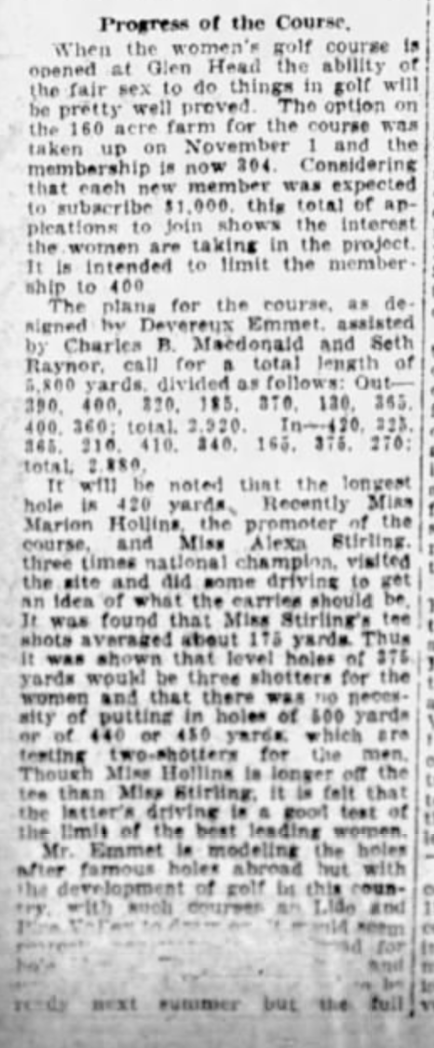
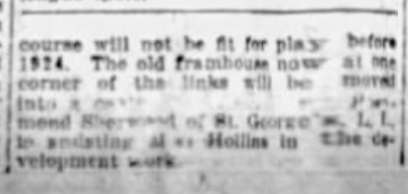
Jan. 1923 Golf Illustrated -
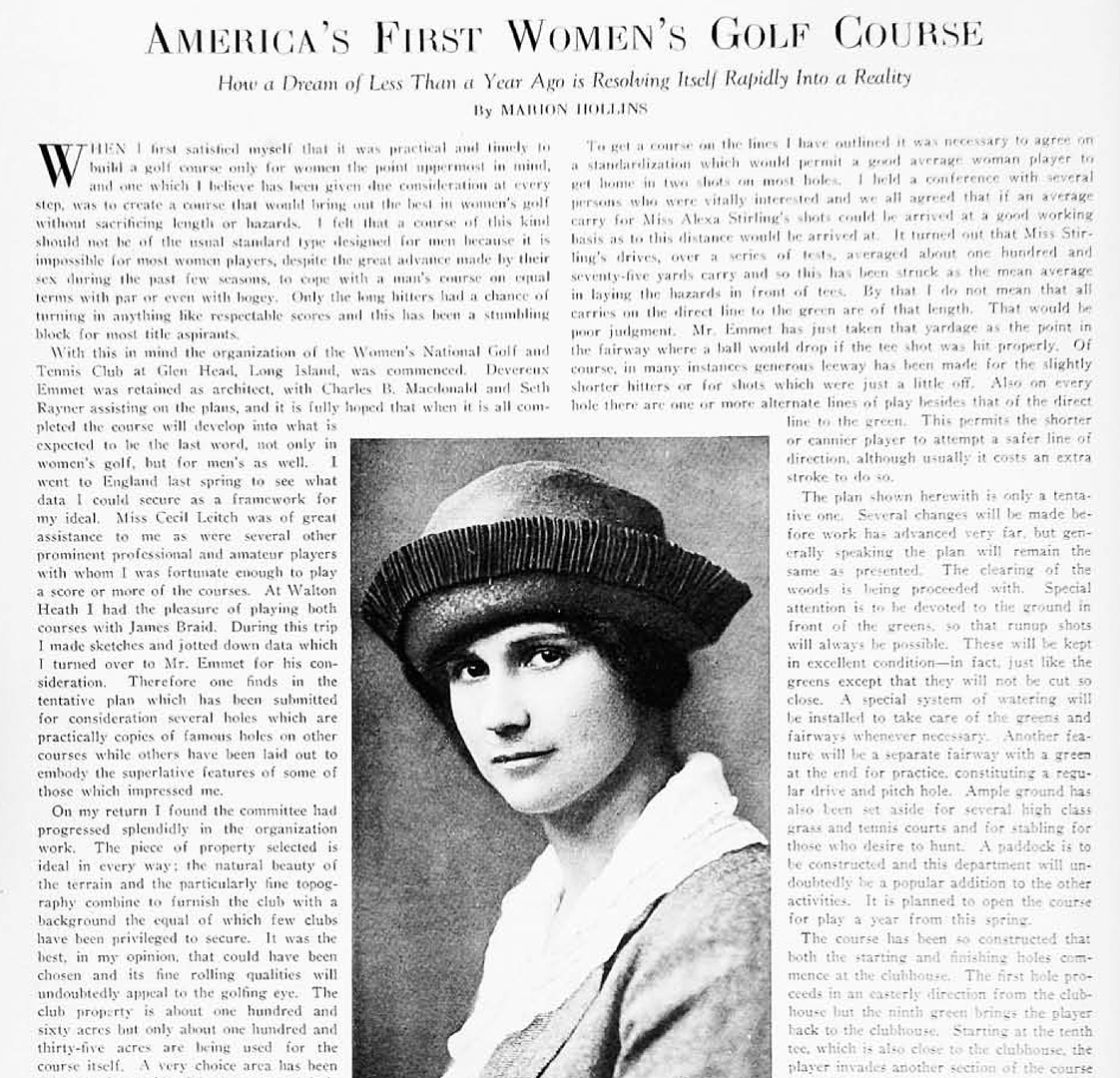
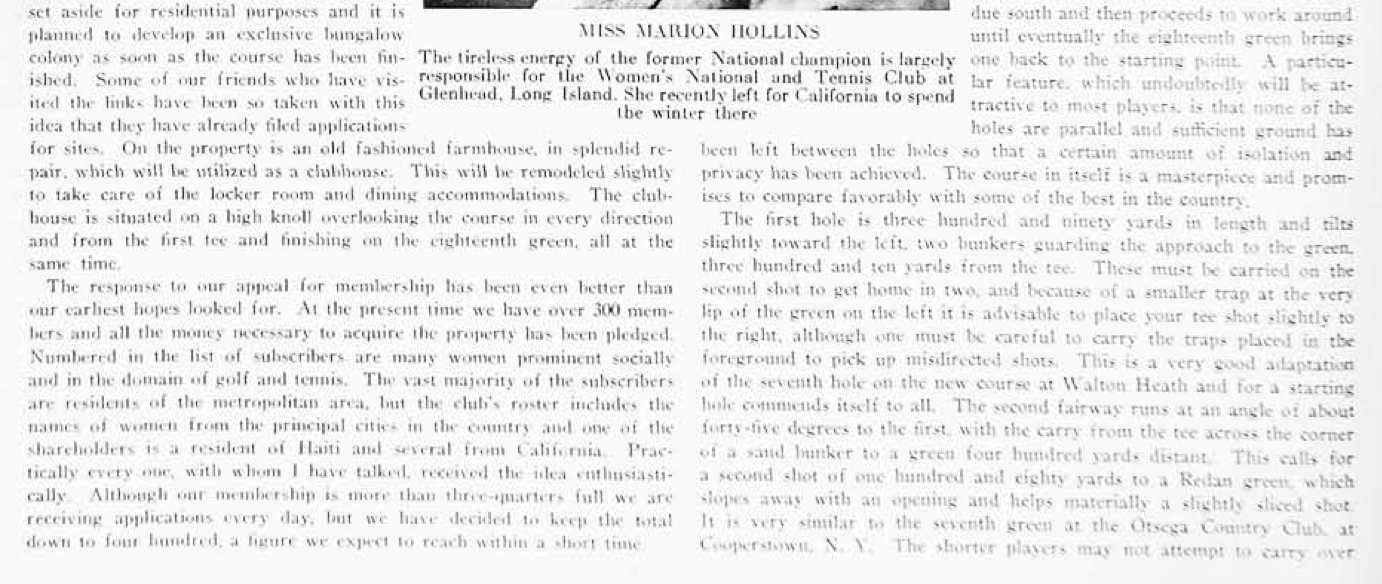



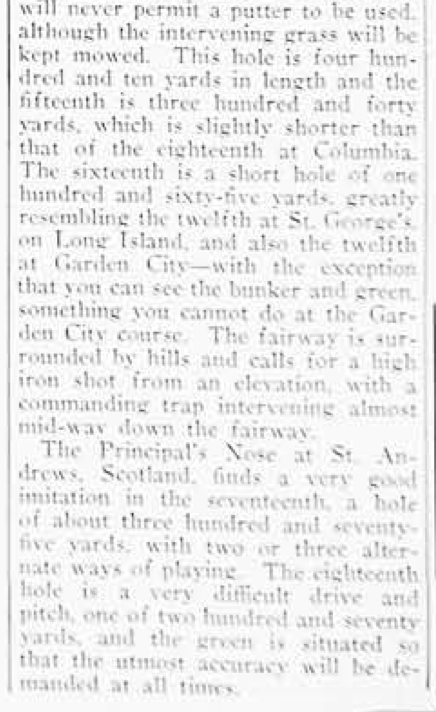
Feb. 9, 1924 New York News -

March 1924 Golf Illustrated -
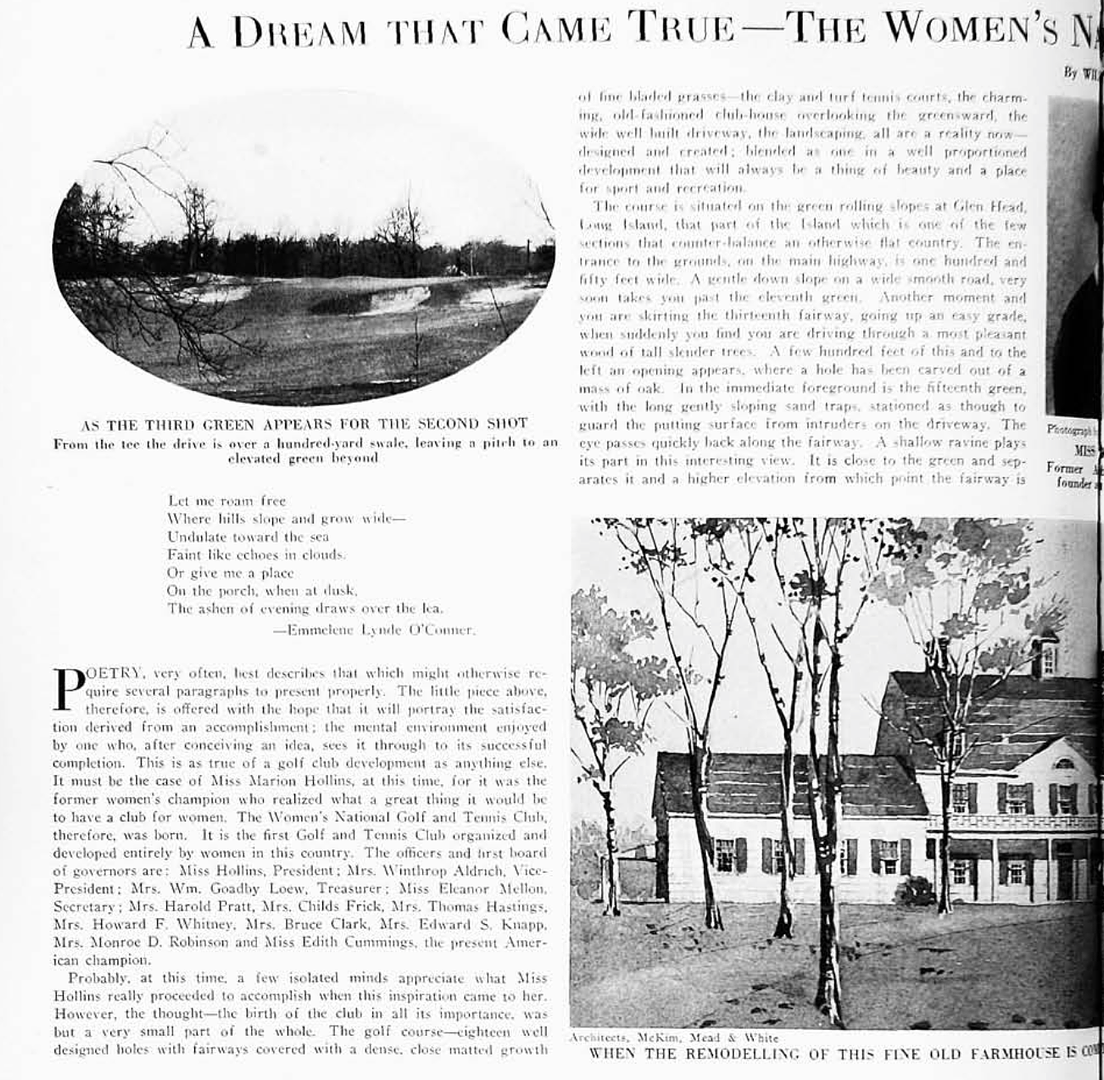
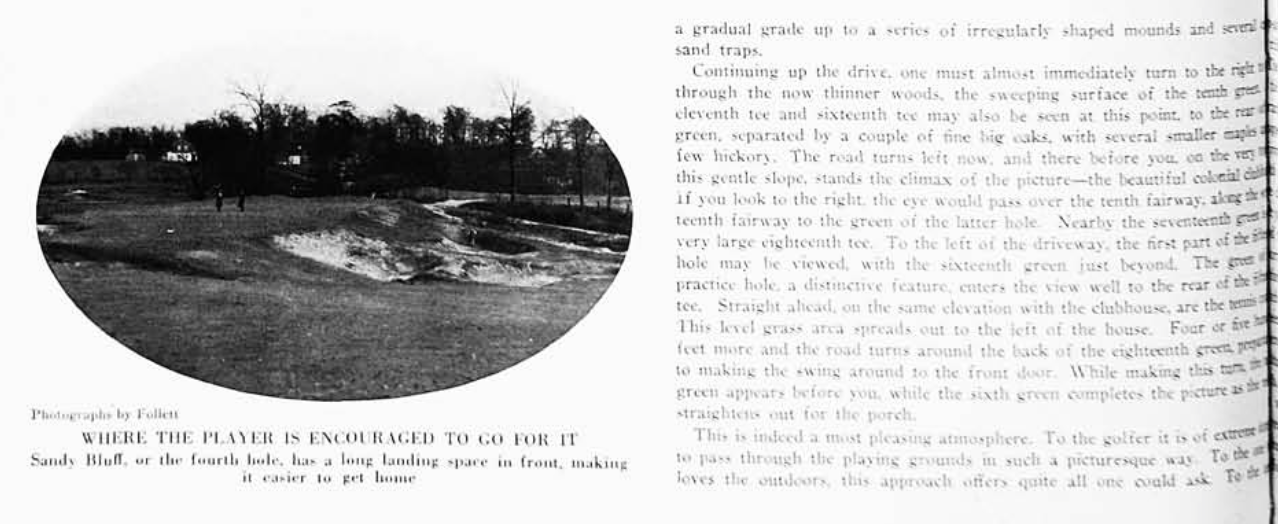
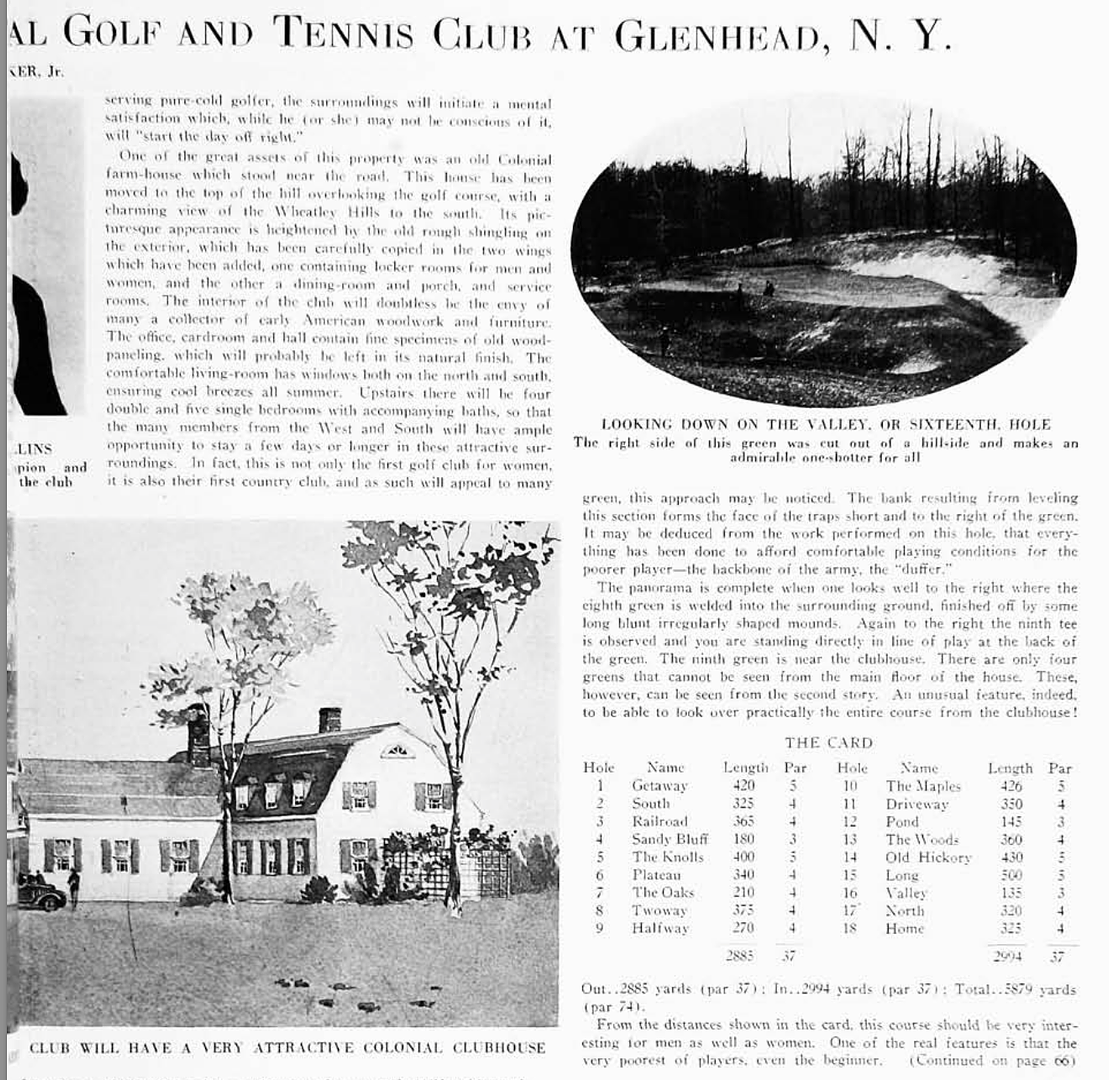
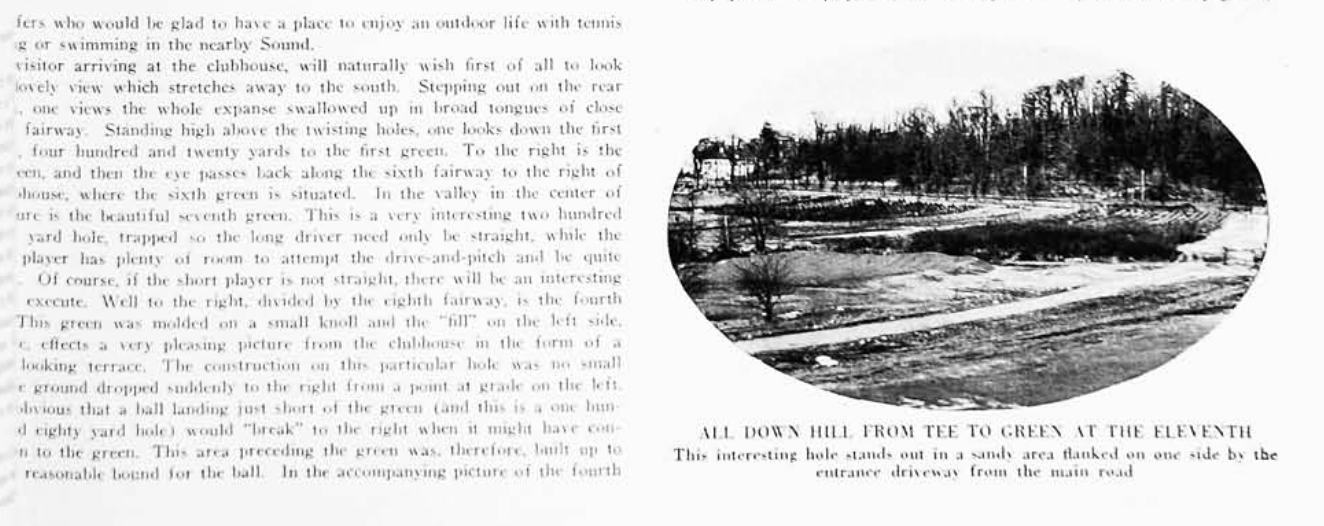


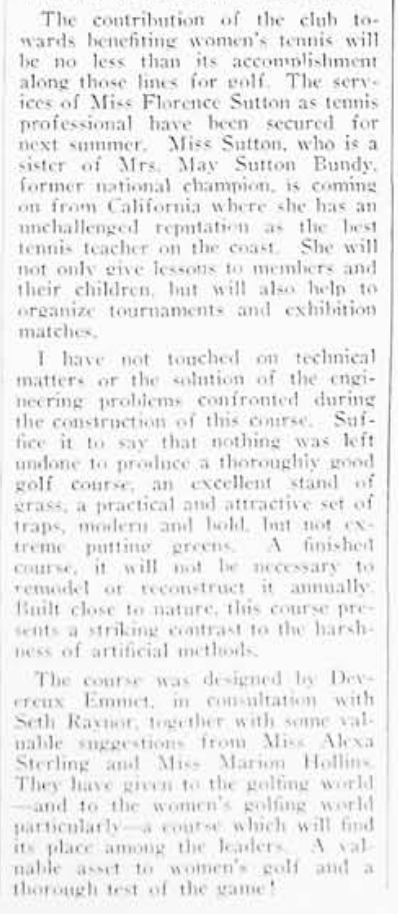 Thousand Islands Club
Thousand Islands Club (Alexandria Bay, NY)
[To be updated]
Greenbrier Golf Course No. 2 (White Sulphur Springs, WV)
The No. 2 for this course is a bit of a misnomer, as it predates the No. 1 Old White course. Originally it was a rather short 18 hole course laid out in 1912 and 1913 by Alex Findlay and Fred Pickering, and was reduced to 9 holes when the Old White was built utilizing the best holes of the original 18 (see the end of the Oct. 1914 article below). As the 1930 Scorecard below indicates, it was still a short 9 hole course at that time and had been described in the press as more of a pitch and putt practice course than a full size course. At some point the what would become the "Lakeside" course was extended to 18 holes (again), and there are reports the work was carried out by George O'Neil.
I am not sure where the idea comes from that Raynor reworked this course in 1922. There are no contemporaneous accounts of any work taking place at that time, although the remodeling work on the Old White and the construction of No. 3 were covered extensively.
Oct. 1914 Golf Magazine -
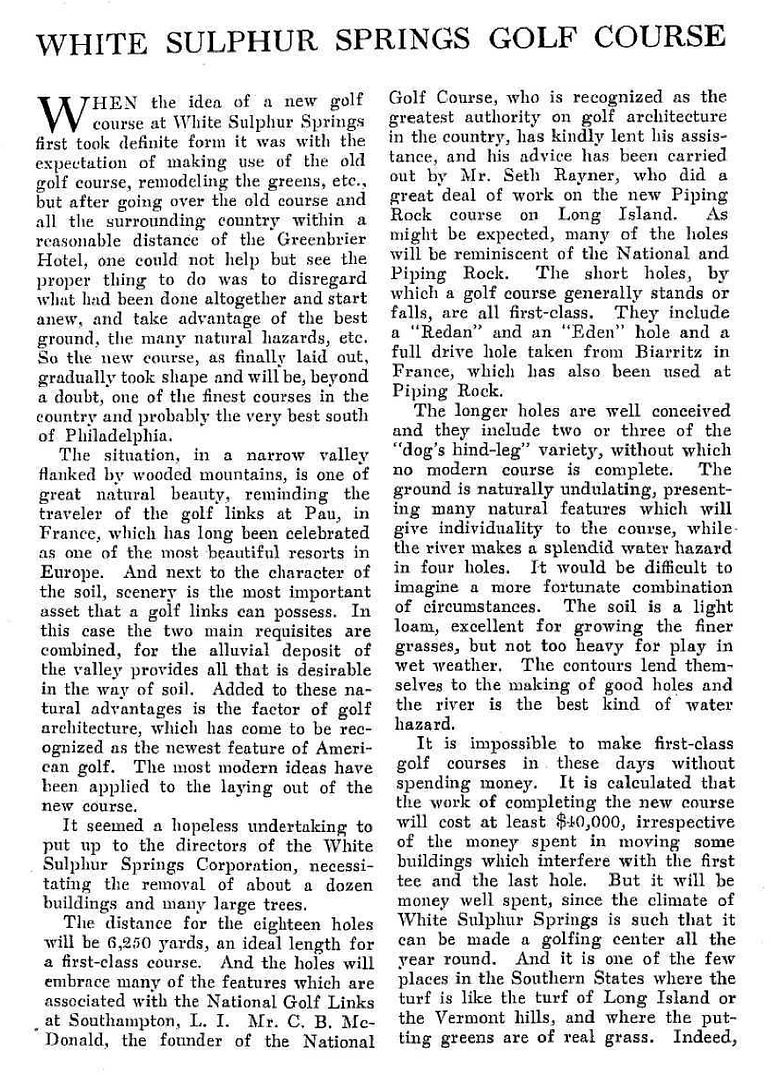

1930 Scorecard -
 Greenbrier Golf Course No. 3
Greenbrier Golf Course No. 3 (White Sulphur Springs, WV)
The third course at the Greenbrier was originally going to be designed by CBM. By 1922 the press began reporting Raynor as the architect, and there are varying accounts on CBM's involvement. In 1926 Charles Banks added bunkers to the course according to Raynor's plans.
June 16, 1920 Evening Public Ledger -
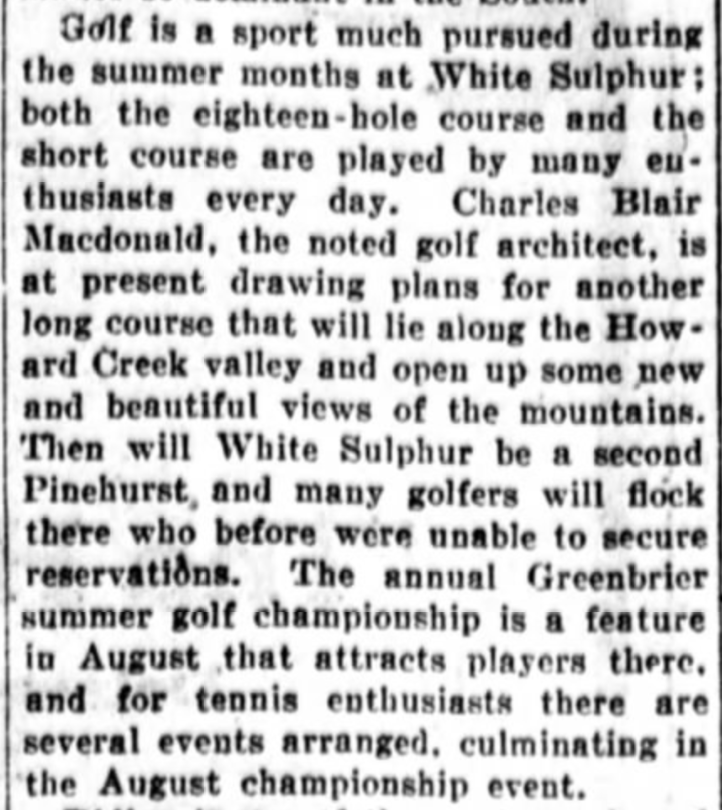
Oct. 28, 1922 New York Herald -

Nov. 5, 1922 Philadelphia Inquirer -
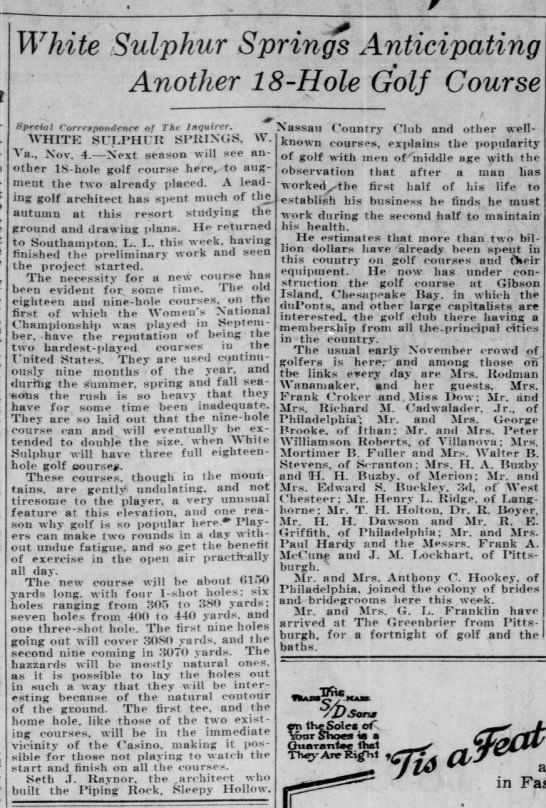
Sept. 1924 Golf Illustrated -
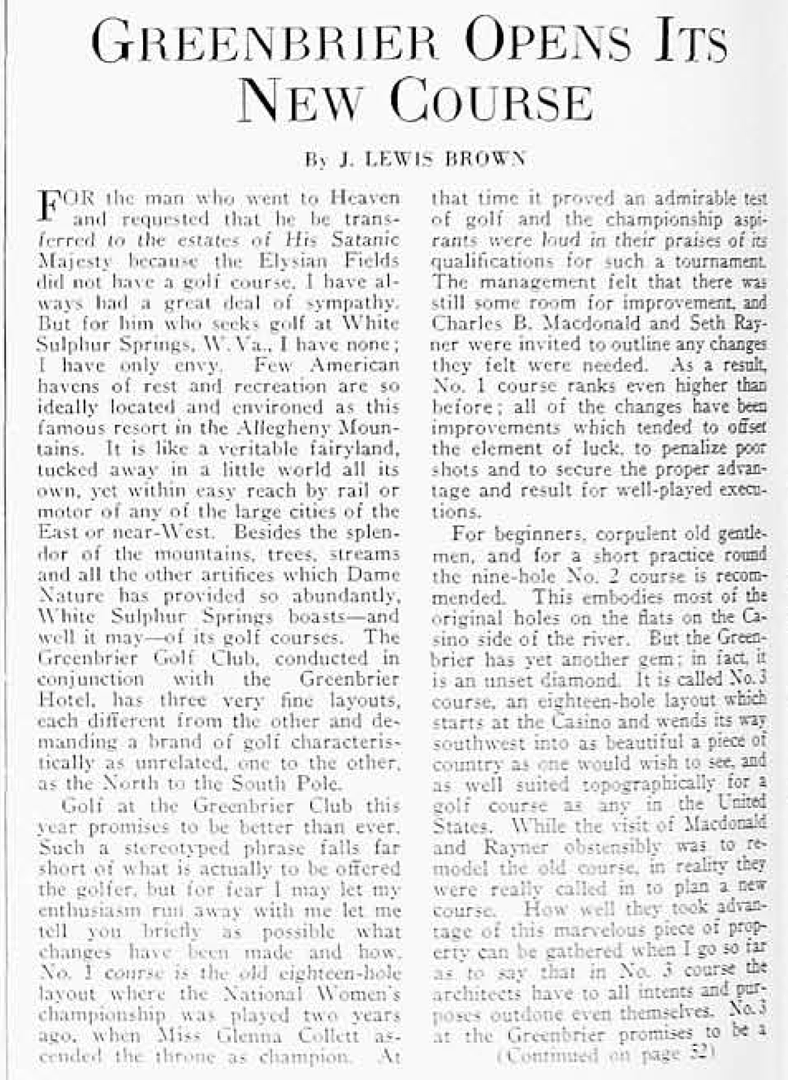

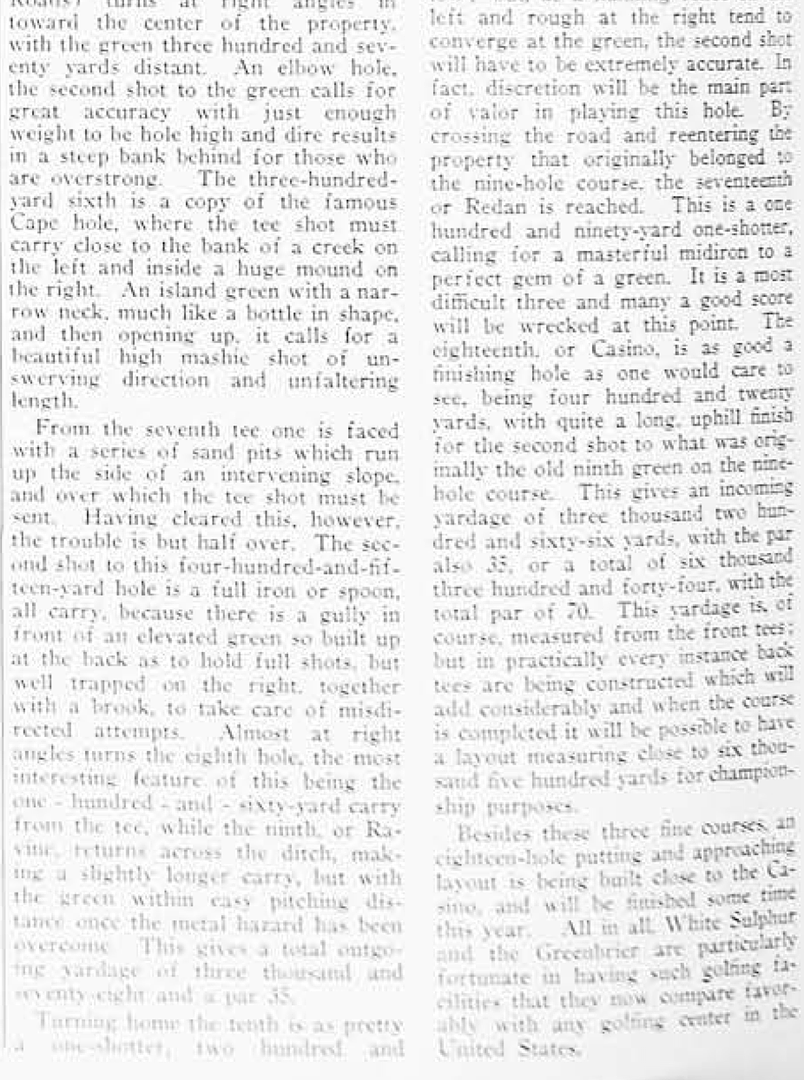
Oct. 20, 1924 The Sun -
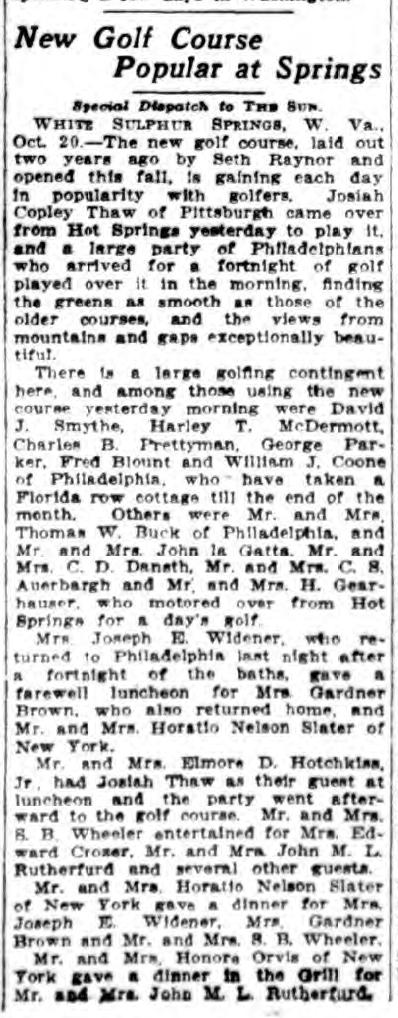
May 1926 Golf Illustrated -
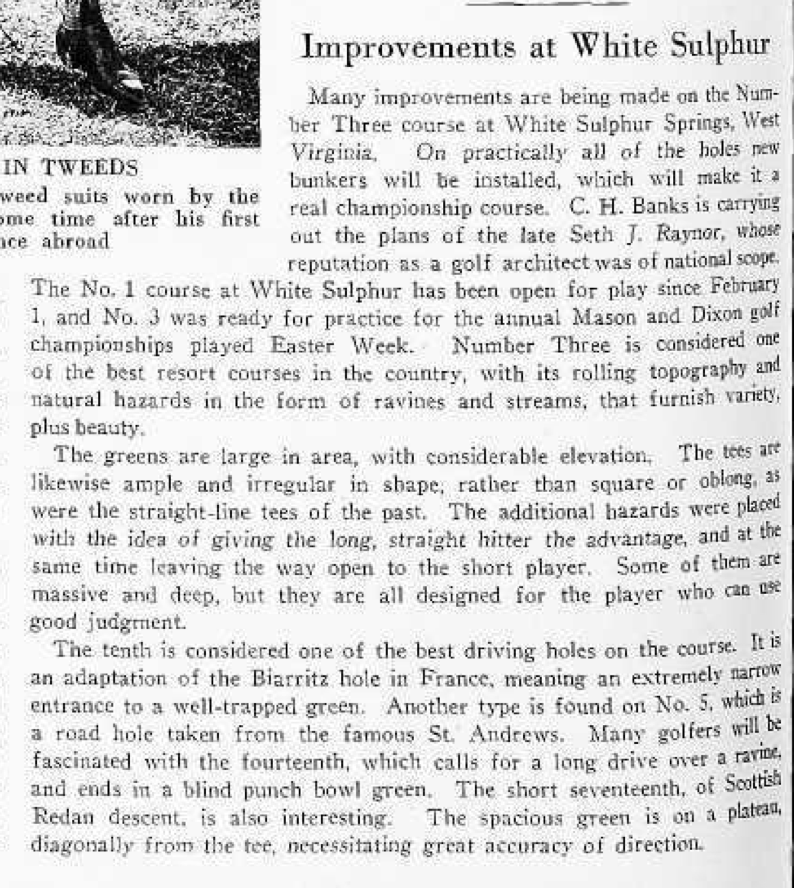
1922 Aerial Photo - Old White on the upper left, Nine Hole No. 2 Course in the middle, No. 3 Course under construction in the lower right -
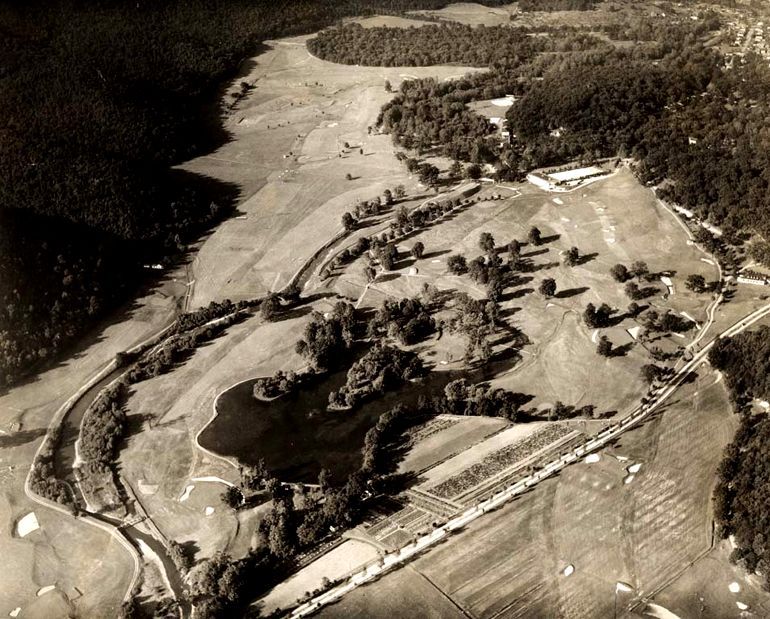
1923 Olmsted Plan -
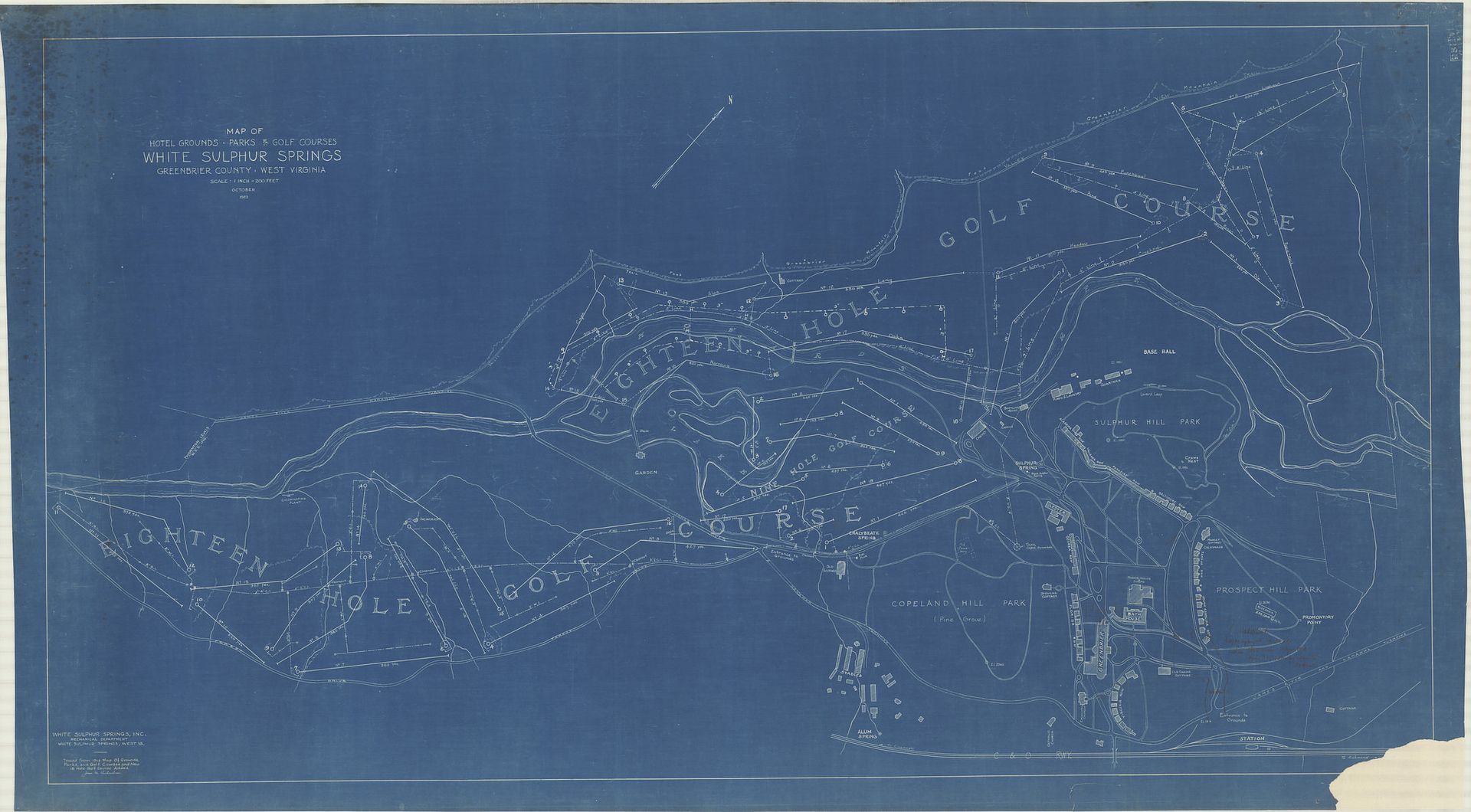
1934 Aerial -
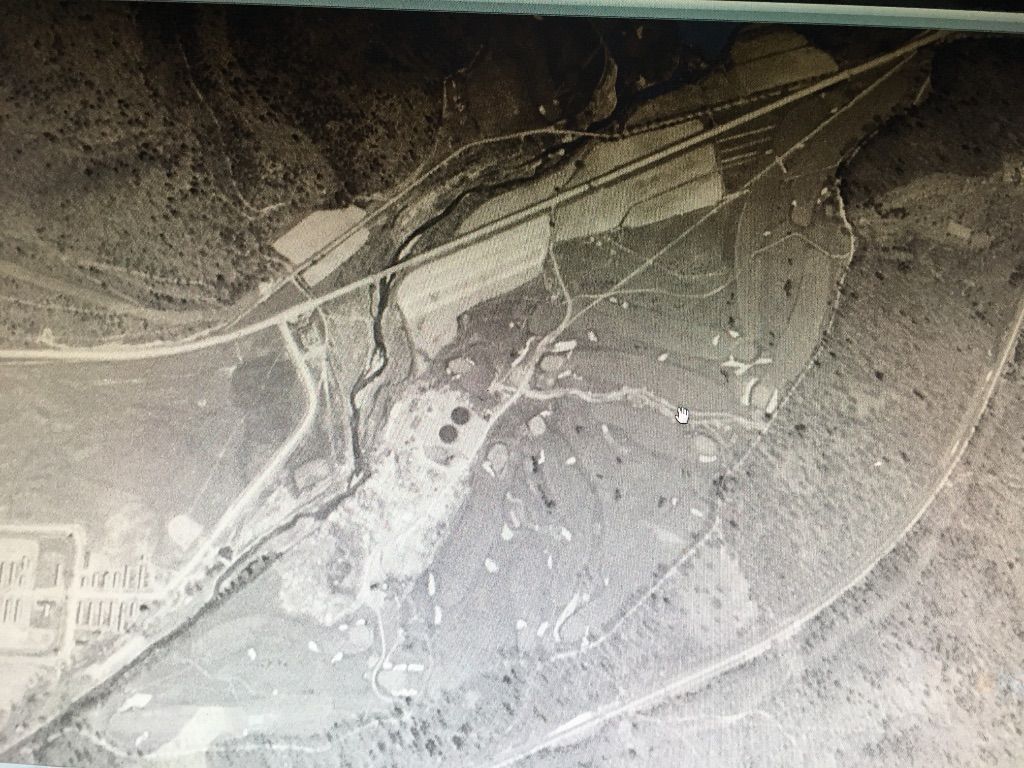
1930 Scorecard -
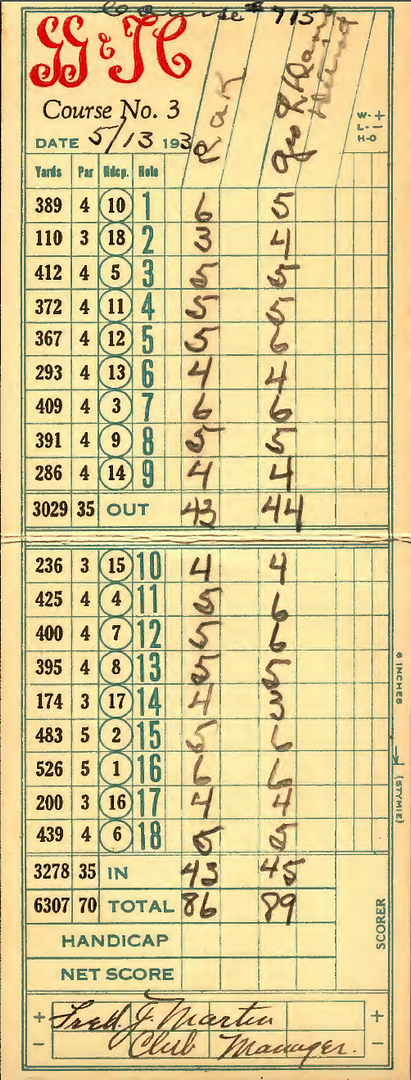 Mid-Ocean Club
Mid-Ocean Club (Tucker's Town, Bermuda)
[To be updated]
1923 Olmsted Plan -
 Riddell's Bay Golf & Country Club
Riddell's Bay Golf & Country Club (Bermuda)
[To be updated]
1933 Scorecard -
